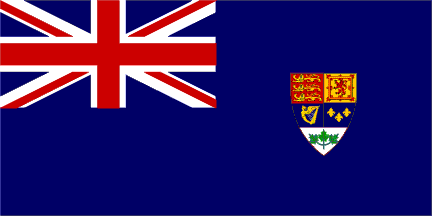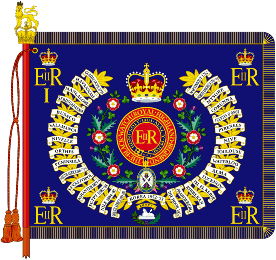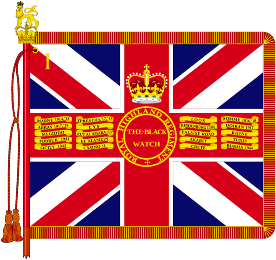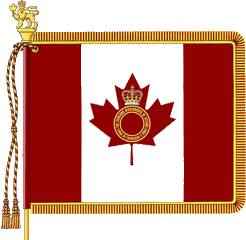![[collar]](../images/v/vx-eg_39r.gif)
![[collar]](../images/v/vx-es)royal.gif)
![[collar]](../images/v/vx-it_roy05.gif)
Royal Standard for Use at Sea, Egypt 1922–1953;
Royal Arms, Spain 1971–2014;
Royal Standard, Italy 1880–1946
Please note that a collar was once frequent on royal standards, and a modern example would be the collar of the order of the golden fleece around the arms on the royal standard of Spain as illustrated above.
Please note that the tern used in heraldry for describing an animal wearing a collar, or of another
charge similarly (closely) encircled is gorged.
![[collared example]](../images/v/vx-fr~ce2.gif)
Civil Ensign c1670, France
2) A possible translation of the Spanish term Banderas Coronelas – but see crown colours.
![[colonels colour]](../images/v/vxt-d2379a.gif)
![[colonels colour]](../images/v/vxt-d2379b.gif)
![[colonels colour]](../images/v/vxt-d2379c.gif)
Examples of Colonel’s Colours, English c1641 (Željko Heimer, CS and fotw)
![[colonial flags]](../images/v/vx-bz-bhond.gif)
![[colonial flags]](../images/v/vx-ma_39f.gif)
![[colonial flags]](../images/v/vx-cd-1897.gif)
Government Ensign of British Honduras 1919–1981;
Civil Ensign of French Morocco 1919–1956; Flag of the
Belgian Congo 1877–1960
Please note that whilst a number of countries still possess territory overseas, the term “colony” (therefore colonial) is no longer used, with the areas concerned being named a dependent and/or overseas territory, overseas department or similar, or are considered an integral part of the motherland.
![[colonial flags]](../images/v/vx-fk.gif)
![[colonial flags]](../images/v/vx-bq-sa.gif)
![[colonial flags]](../images/v/vx-cw.gif)
Falklands Islands;
Saba and Curacao



Jack of
HM Royal Indian Navy 1934–1947;
Blue/Colonial Jack of Sierra Leone 1889–1914 (CS and fotw);
Blue Ensign of Canada 1922–1957
Please note that the term “colony” (therefore colonial) is no longer used, but that vessels belonging to the governing authorities of a British dependent territory are still entitled to wear a square blue jack defaced with the arms or badge of that territory, however, it is not known whether any actually do so at the present time.
![[colors]](../images/v/vxt-d4580.gif)
![[colors]](../images/v/vx-us-nm.gif)
Colors and Flag of the State of New Mexico, US (CS & fotw)
Notes



Queen's Colour and Regimental Colour, 1st Battalion of The Black Watch, UK (Graham Bartram);
Queen's Colour and Regimental Colour, Cameron Highlanders of Ottawa, Canada
a) There are basically three ways
involving a sleeve by which a parade flag or military colour may be affixed to
its staff – with decorative nails (often a precisely regulated number of nails),
by grommet and clip or by tab and hook. However:
b) The practice of
tying a colour to its staff, or attaching it by cloth loops or metal rings is
still occasionally seen (see also
grommet 1),
nails,
ring 4),
sleeve 2),
tab and ties).
c) Please note with regard to 3) that the flags of various non-governmental or
semi-governmental organizations, whilst often being given the reverence and treatment
normally shown to a military colour, should be correctly called parade flags because
they do not have the armed guard usually required by such colours.
![[colour belt example]](../images/v/vx-colourbelt.jpg)
Colour/Flag Belt According to Spanish Regulations (Reglamento de Banderas y Estandartes, Guiones, Insignias y
Distintivos > Regla no. 12)
![[colour guard example]](../images/v/vx-colourguard.jpg)
Colour Guard of the French Navy, 2008 (military-history.fandom.com)
Please note that whilst a number of systems (international, national and proprietary) for identifying colours by numbers or names are listed separately herein, several (particularly national) systems are not – largely because they receive limited use or that use is apparently restricted to their countries of origin (see also British Colour Code, Cable Number, CMYK, International Colour Code and Pantone Matching System).
![[color sergeant example]](../images/v/vx-colorsgt.jpg)
Color Sergeant Army WW1, US (Wikipedia)
Please note that in British military usage this rank, now partially obsolete, had and has (as far as can be discovered) no specific duties connected with escorting or guarding the colour or colours. Historically however, the senior sergeants within any battalion or regiment (for whom the rank was originally instituted) could have such a duty.
![[colour sergeant example]](../images/v/vx-coloursgt.gif)
Colour Sergeant Royal Marines, UK (Wikipedia)
![[colour example]](../images/v/vx-fr^52reg.gif)
![[current US flag]](../images/v/vx-us.gif)
![[Croatian naval ensign]](../images/v/vx-hr~navy.gif)
Military Colours,
France 1852–1853; National Flag/National Ensign, US;
Naval Ensign, Croatia
Notes
a)
In military forces where it is customary
for some or all units to carry a pair of colours, the first of these colours now generally
represents the head of state or the state itself and is known – depending on the country
concerned – as the king's, queen's, sovereign's, royal, national, president's, presidential,
or state colour.
b) The second represents the unit itself and is known as the regimental,
battalion, squadron, organizational, or unit colour. The first type of colour is generally
(but not invariably) based on the design of the national flag, and in a few cases (such as
in the British and Canadian regiments of foot guards) it is the regimental colour that
derives from the design of the national flag.
c) In some countries a single
distinctive colour carried by some military forces (such as the British Royal Navy or the
Indian Air Force) may be designated as a sovereign's (king's, queen's) or president's colour.
![[Colours of Arab liberation]](../images/v/vx-eg-uar.gif)
National Flag of Egypt 1958–1972

![[colour bearer examples]](../images/v/vx-colbear.jpg)
![[flag of defiance]](../images/v/vx-defiance.gif)








